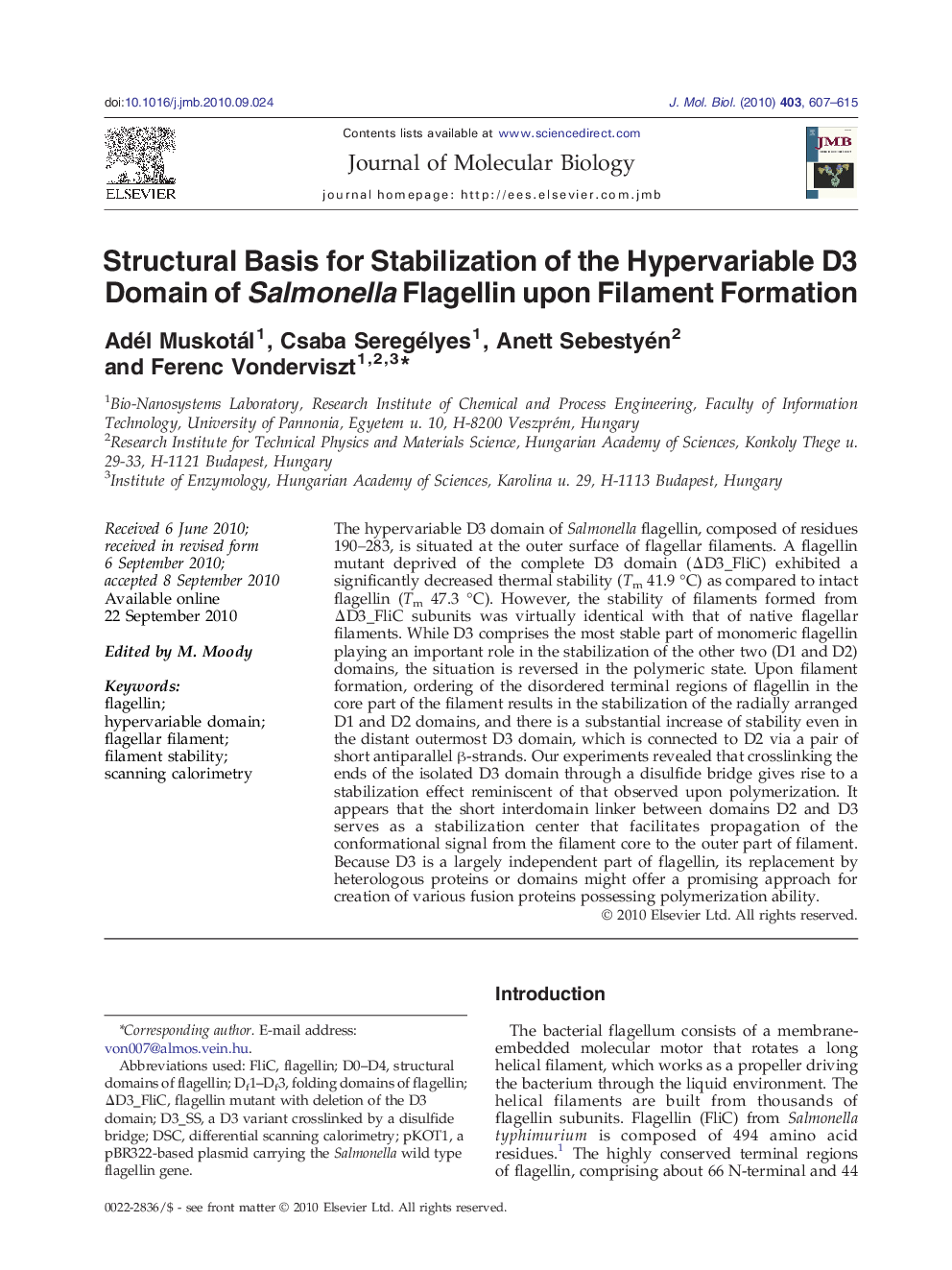| Article ID | Journal | Published Year | Pages | File Type |
|---|---|---|---|---|
| 2185389 | Journal of Molecular Biology | 2010 | 9 Pages |
The hypervariable D3 domain of Salmonella flagellin, composed of residues 190–283, is situated at the outer surface of flagellar filaments. A flagellin mutant deprived of the complete D3 domain (ΔD3_FliC) exhibited a significantly decreased thermal stability (Tm 41.9 °C) as compared to intact flagellin (Tm 47.3 °C). However, the stability of filaments formed from ΔD3_FliC subunits was virtually identical with that of native flagellar filaments. While D3 comprises the most stable part of monomeric flagellin playing an important role in the stabilization of the other two (D1 and D2) domains, the situation is reversed in the polymeric state. Upon filament formation, ordering of the disordered terminal regions of flagellin in the core part of the filament results in the stabilization of the radially arranged D1 and D2 domains, and there is a substantial increase of stability even in the distant outermost D3 domain, which is connected to D2 via a pair of short antiparallel β-strands. Our experiments revealed that crosslinking the ends of the isolated D3 domain through a disulfide bridge gives rise to a stabilization effect reminiscent of that observed upon polymerization. It appears that the short interdomain linker between domains D2 and D3 serves as a stabilization center that facilitates propagation of the conformational signal from the filament core to the outer part of filament. Because D3 is a largely independent part of flagellin, its replacement by heterologous proteins or domains might offer a promising approach for creation of various fusion proteins possessing polymerization ability.
